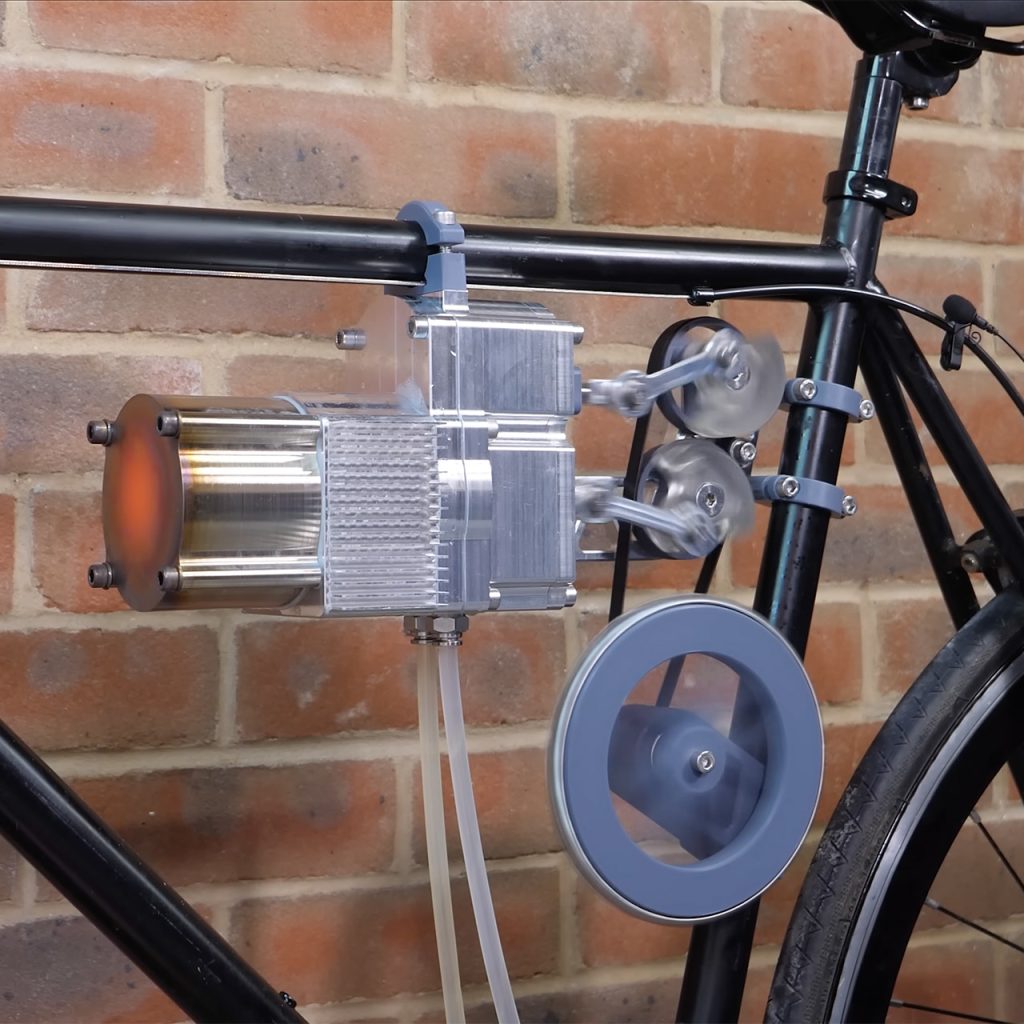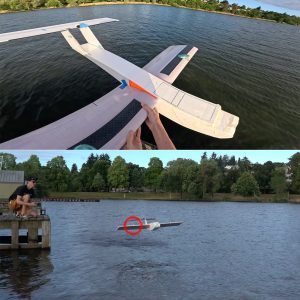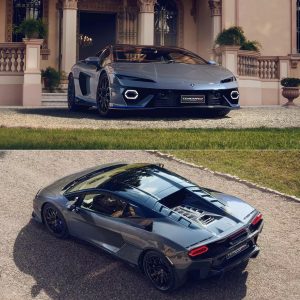Aerospace Engineer Tom Stanton’s Stirling Engine Bike Pedals Heat, Literally


Aerospace engineer Tom Stanton’s latest project, a bicycle powered by a Stirling engine, is an interesting idea that feels revolutionary to stay the least.
Stanton began with the core: a Stirling engine, which is basically a heat engine that harnesses the expansion and contraction of a gas. In this case, air—cycled between hot and cold. Unlike internal combustion engines that burn fuel inside, a Stirling engine uses an external heat source to convert temperature differences into motion. Stanton’s goal was clear: build one to power a bicycle, targeting 150 watts of output, enough for a steady 15 miles per hour.
Sale

VOLPAM Electric Scooter, 350W/500W, 8.5″/10″ Tires, 12/21/28 Miles Range, 16/19/22Mph, Folding E-Scooter…
- 👍Improved Motor: The 350W motor provides high torque but maintains a low power consumption. The e scooter reaches a top speed of 19mph and can…
- 👍Enhanced Battery: A high-capacity battery, our adult electric scooter offer an extended travel range of 12 miles on a single charge. With a quick…
- 👍Easy to Store & Carry: With the quick folding system, this e-scooter can be easily folded in 1 second to store in the trunk; The scooter is light…

He first looked at a CPU heatsink for cooling but switched to a water-cooling system for better efficiency. The engine’s parts are a mix of high-tech and practical. Stanton then 3D printed some and machined others from aluminum and Teflon, chosen for their durability as well as heat resistance. For the hot end, steel was required but Stanton outsourced the machining, a practical decision to keep the project moving.

Mounting the engine to a bicycle frame was no easy task. Standard bikes aren’t designed for the weight or mechanics of a heat engine so Stanton had to reengineer the frame. The engine’s output had to mimic pedal power so he needed custom gears and a drivetrain to connect the engine to the wheels. Every detail, from 3D printed mounts to precise chain alignment, had to be carefully planned out.
Does it work? Sort of. The bike moves, but it’s not going to replace e-bikes anytime soon. Stirling engines are notoriously finicky, requiring precise parts, tight seals and a big temperature differential for efficiency. Stanton’s design, while impressive, deals with the same issues that limit Stirling engines from going mainstream: low power density and a warm up period.
Stirling engines were invented in 1816 but have been eclipsed by steam and internal combustion engines due to their weight and slow start up. Stanton’s bike won’t change that and doesn’t intend to.
[Source]
Aerospace Engineer Tom Stanton’s Stirling Engine Bike Pedals Heat, Literally
#Aerospace #Engineer #Tom #Stantons #Stirling #Engine #Bike #Pedals #Heat #Literally







